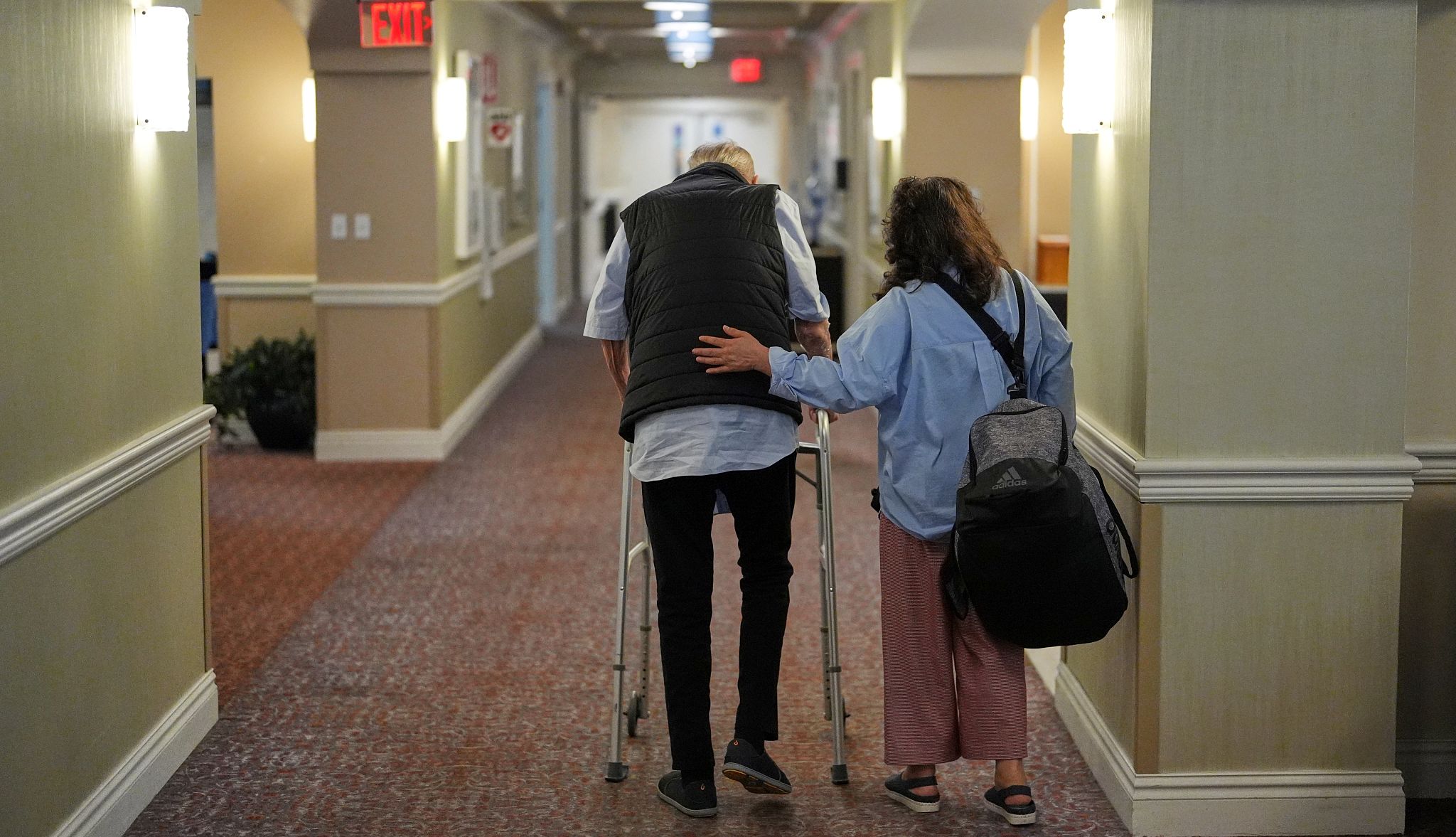AARP Hearing Center


Understaffed facilities, higher medical debts, reduced long-term care coverage. The nation’s 1.2 million nursing home residents and their families could see these problems intensify under the sweeping tax and domestic policy law signed earlier this month.
The One Big Beautiful Bill Act, signed by President Donald Trump on July 4, delays federal standards designed to improve staffing at nursing homes by nearly a decade. Chronic understaffing in these facilities is a widespread issue in the U.S. that often leads to neglect, abuse and even death of residents. The new standards could save about 13,000 lives per year, according to research by the University of Pennsylvania.
The delay in the standards’ implementation is “damaging and devastating for many residents,” says AARP’s Lauren Ryan, a government affairs director focused on federal nursing home policy.
The law’s cuts to Medicaid, the health insurance program for low-income Americans, including roughly 17 million people ages 50 and older, are causing further worry. Cost-cutting provisions, including reduced retroactive coverage, new long-term care eligibility restrictions and delays to enrollment system improvements, are likely to affect nursing home residents too.
“Those are provisions that are explicitly very bad for nursing home residents,” says Sam Brooks, director of public policy at the National Consumer Voice for Quality Long-Term Care. “But the overall bill and its huge cuts to Medicaid is really going to reshape how nursing home and other long-term care is provided in this country — and not for the better.”
Join Our Fight for Caregivers
Here’s what you can do to support family caregivers:
- Sign up to become part of AARP’s online advocacy network and urge lawmakers to pass legislation to save caregivers time and money.
- Find out more about how we’re fighting for you every day in Congress and across the country.
- AARP is your fierce defender on the issues that matter to people age 50-plus. Become a member or renew your membership today.
Cuts to Medicaid in the new law total $911 billion through 2034, according to the nonpartisan Congressional Budget Office (CBO). Medicaid is the largest payer of nursing home care costs in the U.S., covering most of the nursing home bill for more than 6 in 10 residents, according to an analysis by KFF, a nonprofit focused on health policy research and polling.
Plenty of uncertainty remains around how changes set out in the new law will affect nursing home residents. How state governments, which jointly fund Medicaid with the federal government, will respond to the legislation is also still largely unknown, but it will be influential.
“What we do know is that there’s going to be a big loss of federal funding and states are going to have to make decisions on whether they fill the gaps or cut benefits and services in order to balance their own budgets,” says Priya Chidambaram, a senior policy manager at KFF researching Medicaid and America’s uninsured. “It’s highly likely that every state will react differently.”
Here is a breakdown of some of the changes that could affect the country’s nursing home residents.
Mandatory staffing standards on hold
In 2024, the Biden administration finalized new minimum federal staffing standards for the nation’s 15,000 nursing homes — the first of their kind. The standards require a registered nurse on-site at all times, plus a minimum of 3.48 hours of direct nursing care per resident per day – at least 0.55 hours from a registered nurse and 2.45 hours from a nurse’s aide.


































































More From AARP
How ‘Big Beautiful Bill’ Affects Older Adults
Taxpayers ages 65-plus get a new deduction, but SNAP, Medicaid cuts loom for millions
When Will SNAP, Medicaid Changes Take Effect?
Older adults on SNAP and Medicaid may lose aid under the new federal budget
Caregivers Get 211 Help in 25 States
AARP expands caregiver support line